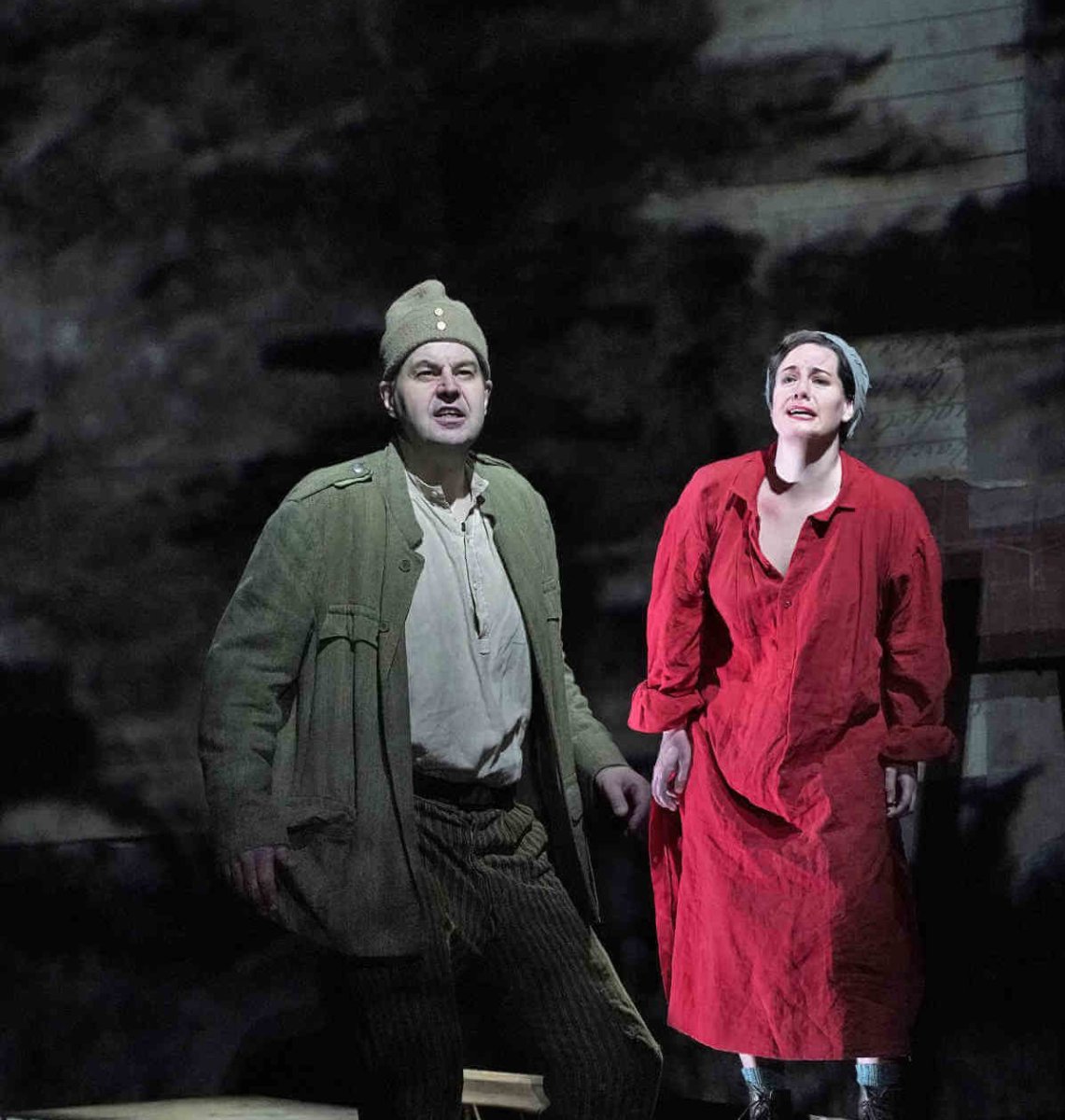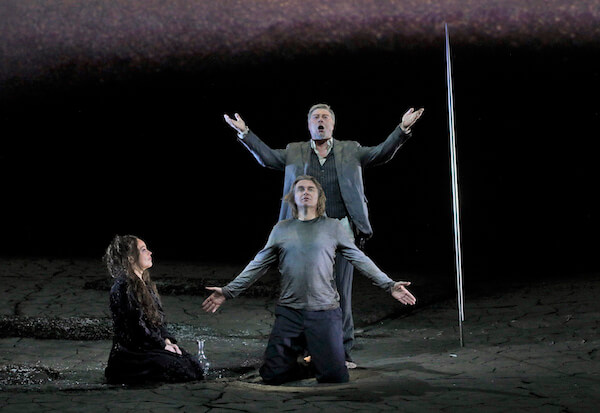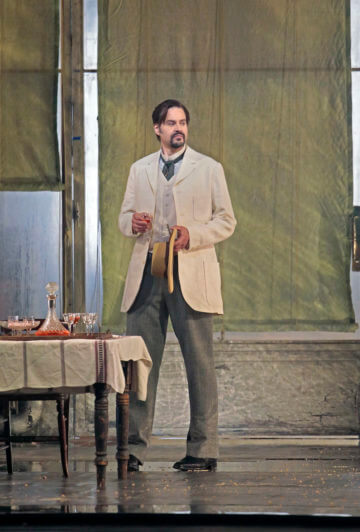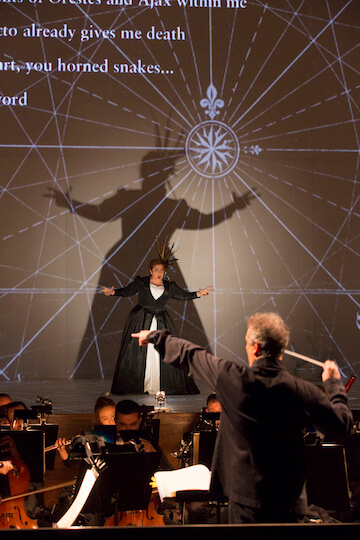South African artist William Kentridge returned to the Metropolitan Opera for the third time presenting a local iteration of his 2017 Salzburg Festival production of Alban Berg’s “Wozzeck.” Kentridge’s multimedia approach (combining live action with a stage filled top to bottom with non-stop projected films and images) worked for his production of Shostakovich’s “The Nose” because the Gogol short story it is based on is an absurdist satire with a fantastical, illogical plot.
Büchner’s “Woyzeck” and Wedekind’s “Earth Spirit” and “Pandora’s Box” are 19th and early 20th century naturalistic tragedies dealing with real people in a real environment suffering under cruelty and oppression. Berg’s later operatic adaptions, “Lulu” and “Wozzeck,” are faithful adaptations centering on the role of the individual exploited in a society driven by money, power, and sex.
Kentridge is not a dramatist but a visual artist. He constructs elaborate visual spectacles where animated cartoons and projected images tell the story rather than the performers.
These elaborate expressionist visual fantasias on themes from the opera fail to place the singing actors in a relatable environment or social context — so the human drama falls flat.
The new “Wozzeck” works somewhat better than his “Lulu” because Kentridge and his set designer, Sabine Theunissen, and projection designer, Catherine Meyburgh, are no longer relegating the singers to the sides of the stage so that the centerstage projection screen isn’t blocked by inconvenient people. In “Wozzeck,” while the performers run up and down the vertiginous catwalks of Theunissen’s set, animated cartoons of a general marching, zeppelins, bombs falling, wounded officers, and desolate fens are projected on a cyclorama in the background. These projections are not so distracting during the musical interludes between scenes, but one wishes they would stop in the dramatic scenes so that we could focus on the performers.
The setting of the opera is pushed forward to the World War I era during active combat — the choristers are dressed (by costume designer Greta Goiris) as injured soldiers with crutches and bandages, while extras dressed as medical orderlies roam the stage moving props and scenery. Once again, Kentridge and his co-director Luc De Wit fail to give the singers (many in role debuts) specific personal direction enabling them to overcome the sensory overload surrounding them.
What is an abject failure is an idea purloined from Anthony Minghella’s “Madama Butterfly” production — Marie’s child is played by a puppet. In the Minghella “Butterfly,” it is a controversial conceit, but the puppet Trouble is recognizably human and given detailed movements and emotional responses. The puppet representing Marie’s child has an oversized featureless head resembling a gas mask with goggle eyes and a tiny rag doll body. The puppeteer is present and visible during intimate conversations between Wozzeck and his common law wife Marie, so that they lose intimacy. The puppet is particularly alienating in the heartbreaking final scene, where the local children (offstage voices here) brutally tell Marie’s child that his mother is dead and he follows them on his toy horse to view her corpse (setting off on his own life road of emotional trauma, poverty, and neglect). There is no human child visible onstage as this grotesque toy wriggles about in the hands of two puppeteers, so we don’t care.
Musically, this was a superbly played and sung performance. The two leads, Peter Mattei as Wozzeck and Elza van den Heever as Marie, are making role debuts. Mattei found lyricism in the most jagged 12-tone writing, and Van den Heever’s silvery, focused soprano displayed a remarkable purity of attack and radiance of tone. But Mattei seemed oddly muted for such a charismatic singing actor: Wozzeck’s descent into alienation and madness didn’t intensify as humiliations rain down on him. Van den Heever’s Marie lacks sensuality and vulnerability. Both singers failed to project the desperation of their characters though occasionally they touched notes of genuine despair.
Gerhard Siegel made a vivid Captain, a master of Sprechstimme who somehow wasn’t upstaged by the cartoons projected on a screen behind him. Christian Van Horn’s mellow voiced Doctor seemed too normal and insufficiently sinister. Heldentenor Christopher Ventris was solidly in command as the cock-of-the-walk Drum Major. Tamara Mumford as Margret and David Crawford as an Apprentice managed to make something vivid of their cameo roles.
Yannick Nézet-Séguin, the Met’s out gay music director, was a master of detail and dynamics, eliciting gossamer threads of sound to thundering fortissimos from a reenergized Metropolitan Opera Orchestra. Complex layers of Berg’s orchestral writing emerged translucently clear and finely detailed under his baton. Nézet-Séguin never overwhelmed the singers, with orchestral volume maintaining a lightness of touch amid all the darkness. But all these superb musicians were reduced to providing a soundtrack to Kentridge’s sound and light show.
“Wozzeck” will be transmitted in HD to movie theaters worldwide on Saturday, January 11 at 12:55 p.m. Clever camera direction should edit the ADD-inducing production into something less alienating and more focused on individuals. For screening details, visit tinyurl.com/t934kkp.



































